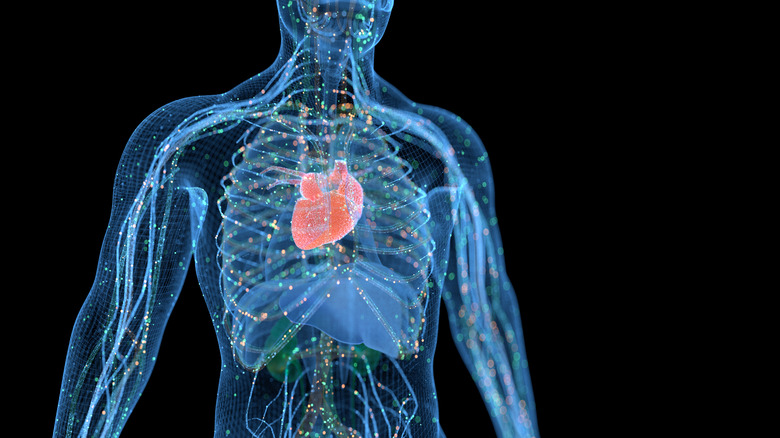Why Women Often Feel Colder Than Men
Let's paint a familiar scene: You're curled up under a blanket, wearing thick socks and a hoodie, while your partner lounges in shorts, claiming the room feels "fine." You wonder if they're part furnace. They wonder if you're being dramatic. But as it turns out, this difference in temperature tolerance isn't just a matter of comfort — it's rooted in biology, hormones, and even building design.
The observation that women often feel colder than men isn't new, and it's not anecdotal, either. In countless homes, offices, and airplanes, it's become an unspoken rule that women reach for the thermostat long before the men in the room notice a chill. And science has plenty to say about why. On average, women tend to have colder hands and feet, a lower resting metabolic rate, and different patterns of blood flow. All of this influences how the body perceives temperature, even when it's so cold it feels like your limbs have fallen asleep. Hormones like estrogen also play a role in amplifying the sensation of cold.
But here's the kicker: Even the way we design shared spaces like offices tends to reflect a default male physiology, leading to environments that leave women shivering. So, the next time someone calls you out for always being cold, know that you're backed by evolutionary biology, circulatory science, and decades of misaligned thermostat settings. Here, we'll dig into what's really going on under the surface — from blood vessels to workplace bias — to better understand why thermal comfort can be anything but equal (and how temperature can affect metabolism, too).
The science behind the chill
At the core of temperature perception lies a physiological divide: metabolism. Women generally have a lower resting metabolic rate than men, meaning they produce less body heat at rest. Muscle mass plays a role in heat generation, and because men typically have more lean muscle, they tend to run "hotter" than women, whose bodies often conserve energy, sometimes at the expense of warmth.
"Basically, men generate their own little heat islands, kind of like walking space heaters," osteopathic physician Dr. Rob Danoff told Doctors of Osteopathic Medicine. "But since women typically have less muscle mass and evaporate less heat through the pores in their skin, they might feel colder than men in a room with the same air temperature." Paradoxically, women also tend to carry more subcutaneous fat, which you'd expect would help trap heat. And to some degree, it does, but fat also acts as insulation, reducing heat transfer from muscles to the skin. Women are also smaller than men on average, meaning they lose more heat more quickly due to a higher surface-to-volume ratio.
Combine that with the way the female body regulates blood flow through hormonal changes of estrogen and progesterone. The former dilates blood vessels in the body's extremities, resulting in more heat lost to the air. The latter causes blood vessels in the skin to constrict a bit, so less blood flows to some areas while keeping the core warm. The skin is the body's largest organ, so how it behaves relative to heat matters. Interestingly, women are also more likely to have Raynaud's disease, a condition in which vessels that move blood to the extremities constrict excessively while responding to cold temperatures. So, it's not just "in your head," your hormones, circulation, and biology all contribute to that sweater-worthy chill.
Culture and comfort: why cold feels gendered
It turns out the chill isn't just in your head — it's built into the buildings. A landmark study published in Nature Climate Change in 2015 found that many indoor climate control systems are based on a 1960s formula tailored to the metabolic rate of an average 40-year-old man weighing around 154 pounds. This outdated standard still informs the design of office air conditioning systems today, creating environments that may feel comfortable for some, but frigid for many women.
Clothing choices can also reinforce this discomfort. In professional settings, social norms often expect women to wear lighter fabrics, skirts, or blouses — even when the temperatures dip. Meanwhile, men may be expected to dress in layers or wear full suits, which offer more insulation. It's not just about the thermostat and biology, it's about what the societal mores are.
Lastly, perception plays a part, too. Research suggests that women may have greater sensitivity to temperature changes, especially in static environments like offices or airplanes. Whether due to physiological or psychological factors, the outcome is the same: women tend to experience a colder world. Understanding this isn't just about solving the great blanket tug-of-war; it's about recognizing how built environments, cultural expectations, and biology intersect to shape our daily comfort. So, what needs to change? Some researchers suggest updating the 1960s office model to be more inclusive of women's needs. Using the available data, communities large and small could try to alter equally outdated clothing expectations in professional settings, creating a more agreeable working environment for everyone. To learn more about how odd our bodies can be, check out what really happens when you crack your knuckles.


